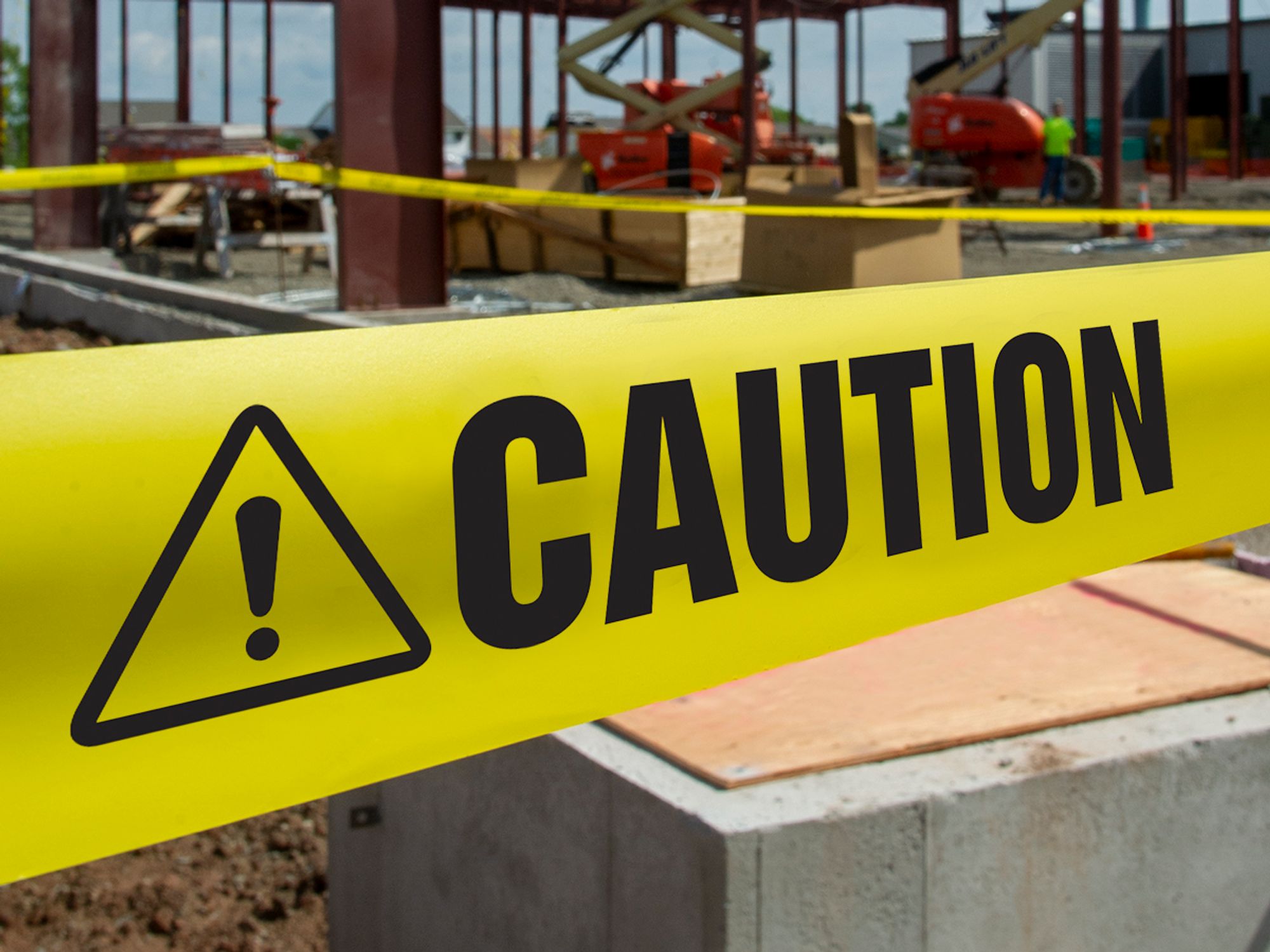InstituteSafety & HealthGeneral Industry SafetySigns and MarkingsSigns and MarkingsEnglishAnalysisFocus AreaCompliance and Exceptions (Level 2)USA
Barricade tape, also known as caution tape
['Signs and Markings']

- Barricade tape is used to block off and signal the presence of a temporary or unexpected hazard or condition.
Barricade tape is a non-adhesive strip of polyethylene, vinyl, or other material positioned to block employees and others and alert them to a temporary or unexpected hazard or condition.
Purpose
Barricade tape is used to restrict access to and/or prevent accidental injury or illness from:
- A temporary hazardous or potentially hazardous condition; or
- Equipment or operations that are:
- Defective
- Out of the ordinary
- Unexpected
- Not readily apparent
Related regulations and standards
The Occupational Safety and Health Administration (OSHA) has regulations that relate to barricade tape:
- 1910.109(e)(1)(iv),Table H-22, (i)(5)(ii)(c)
- 1910.265(d)(3) and (e)(5)(iii)
- 1910.268(j)(4)(iii)
- 1910.269(o)(2)(iii), (p)(4)(iii), (q)(3)(xii), (w)(6)(iii)-(iv), and (x)
- 1926.151(d)(7)
- 1926.252(b)
- 1926.451(h)(2)(i)
- 1926.501(b)(7), (b)(10), (c)(3)
- 1926.600(a)(1)
- 1926.651(f), (j)(1)
- 1926.800(b)(3), (o)(2)
- 1926.850(h)
- 1926.855(f)
- 1926.900(i)
- 1926.959(d)(3)(iii)(D)
- 1926.963(c)(3)(ii)
- 1926.964(c)(11)
- 1926.967(g)(3)-(4)
- 1926.968
- 1926.1053(b)(8)
- 1926.1202
- 1926.1203(e)(2)(ii)
- 1926.1204(c)(6), (d)(6)
- 1926.1407(b)(3)(v)
- 1926.1408(b)(3)
- 1926.1410(d)(3), (d)(8)
- 1926.1417(e)(1)(iv)
- 1926.1437(n)(5)(ii)
The American National Standards Institute (ANSI) also has standards that relate:
- ANSI Z535.5-2011, American National Standard for Safety Tags and Barricade Tapes (for Temporary Hazards), which is adopted by OSHA 1926.200.
- ANSI Z535.5-2017, American National Standard for Safety Tags and Barricade Tapes (for Temporary Hazards), which is the latest ANSI standard on barricade tape but is not adopted by OSHA.
- ANSI Z535.5-2022, American National Standard for Safety Tags and Barricade Tapes (for Temporary Hazards), which is the latest ANSI standard on barricade tape but is not adopted by OSHA.
